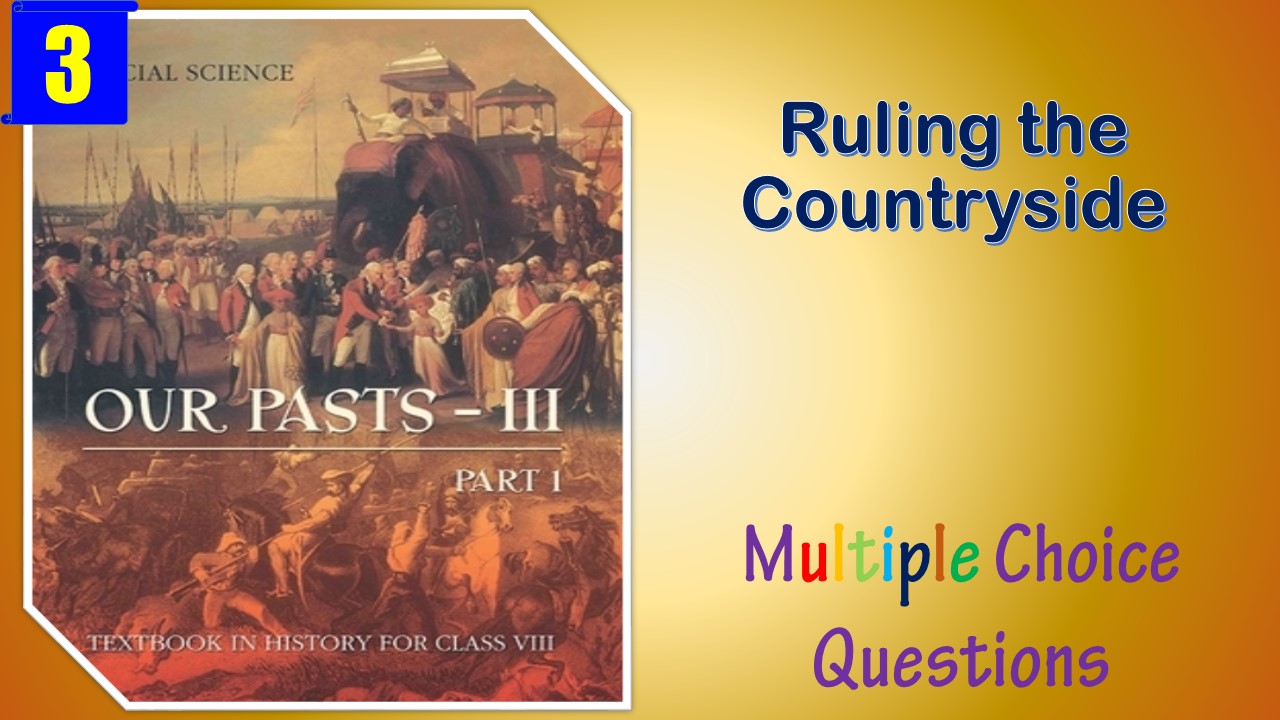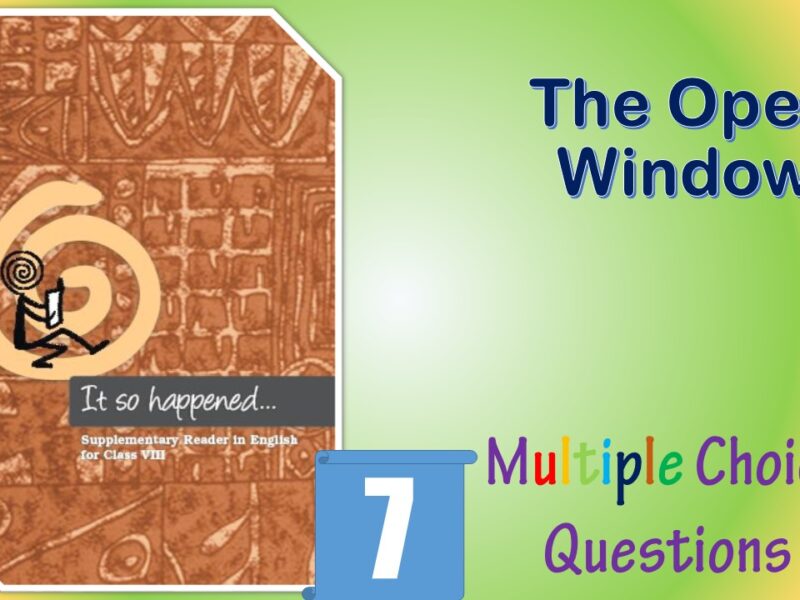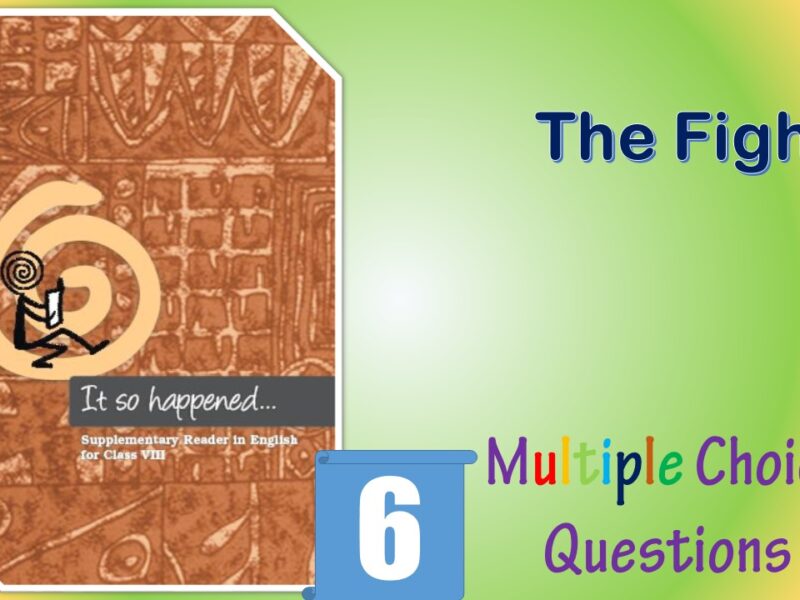Class 8 Social Science History MCQ Ruling the Countryside with Answers is Prepared Based on Latest Exam Pattern. Students can solve NCERT Class 8 Social Science History MCQ Ruling the Countryside with Answers to know their preparation level.
Students who are searching for NCERT Class 8 Social Science History MCQ Ruling the Countryside with Answers are compiled here to get good practice on all fundamentals. Know your preparation level on MCQ Questions for Class 8 Social Science History MCQ Ruling the Countryside with Answers. You can also verify your answers from the provided Class 8 Social Science History MCQ Ruling the Countryside with Answers. So, ace up your preparation with MCQ of Class 8 Social Science History MCQ & NCERT Textbook solutions Examinations.
CBSE Class 8 Social Science History MCQ
Ruling the Countryside
with Answers
Question :The Champaran movement was against
(a) peasants
(b) East India Company
(c) the oppressive attitude of the planters
(d) none of the above
Answer : (c) the oppressive attitude of the plantersShow Answer :
Question :The Company was appointed as the Diwan of Bengal in
(a) 1762
(b) 1763
(c) 1764
(d) 1765
Answer : (d) 1765Show Answer :
Question :Gandhiji visited Champaran
(a) to see the plight of Indigo planters in Champaran
(b) to see the progress of’Indigo plantation
(c) to see the managing system of company
(d) none of the above
Answer : (a) to see the plight of Indigo planters in ChamparanShow Answer :
Question :Who devised the new-system of revenue called Mahalwari?
(a) Queen Elizabeth
(b) Holt Mackenzie
(c) Queen Victoria
(d) Gandhiji
Answer : (b) Holt MackenzieShow Answer :
Question :Growers of woad in Europe saw crop as competition to their earnings.
(a) tea
(b) rubber
(c) indigo
(d) coffee
Answer : (c) indigoShow Answer :
Question :Indigo production came down in Bengal in
(a) 1850
(b) 1852
(c) 1855
(d) 1859
Answer : (d) 1859Show Answer :
Question :Who had developed the Munro system?
(a) Capiain Alexander
(b) Holt Mackenzie
(c) Thomas Munro
(d) None of these
Answer : (c) Thomas MunroShow Answer :
Question :How much proportion of Indigo was imported from India by Britain in 1810?
(a) 75%
(b) 95%
(c) 90%
(d) 85%
Answer : (b) 95%Show Answer :
Question :H.T. Colebrook describes the conditions of the under-tenant farmers in
(a) 1800
(b) 1805
(c) 1806
(d) 1810
Answer : (c) 1806Show Answer :
Question :After harvest, the indigo plant was taken to the in the indigo factory.
(a) dye
(b) vat
(c) farm
(d) machine
Answer : (b) vatShow Answer :
Question :The international demand of indigo was affected by the discovery of
(a) synthetic dyes
(b) woad
(c) blue colour
(d) none of these
Answer : (a) synthetic dyesShow Answer :
Question : The lathi weilding strongmen maintained by planters are:
(a) Ryots
(b) Peasant
(c) Lathiyals
(d) Vat-Beater
Answer :(c) LathiyalsShow Answer :
Question :What do you mean by nij and ryoti?
(a) The two main trading centres of indigo
(b) The two main areas where indigo was cultivated in India
(c) The two important systems of indigo cultivation
(d) The two main sets of zamindars
Answer :(c) The two important systems of indigo cultivationShow Answer :
Question :The Company was appointed as the Diwan of Bengal in
(a) 1762
(b) 1763
(c) 1764
(d) 1765
Answer :(d) 1765Show Answer :
Question :In which year was the Permanent Settlement System started?
(a) 1900
(b) 1885
(c) 1890
(d) 1793
Answer :(d) 1793Show Answer :
Question :A terrible famine had stuck Bengal in
(a) 1770
(b) 1775
(c) 1779
(d) 1764
Answer :(a) 1770Show Answer :
Question :1770, famine killed:
(a) 10 million people
(b) 20 million
(c) 1/4th of population
(d) 1 Lac
Answer :(a) 10 million peopleShow Answer :
Question :From among the regions mentioned below, which region introduced the Mahalwari Settlement System in 1822 ?
(a) Bombay
(b) Madras
(c) Bihar
(d) Uttar Pradesh
Answer :(d) Uttar PradeshShow Answer :
Question :Who devised the new-system of revenue called Mahalwari?
(a) Queen Elizabeth
(b) Holt Mackenzie
(c) Queen Victoria
(d) Gandhiji
Answer :(b) Holt MackenzieShow Answer :
Question :Who among the following introduced the Ryotwari Settlement system ?
(a) Thomas Munro
(b) Holt Mackenzie
(c) Lord Dalhousie
(d) Lord Cornwallis
Answer :(a) Thomas MunroShow Answer :
Question :Artisans started deserting bengal villages because
(a) of famine
(b) unavailability of raw material.
(c) they were forced to sell goods at low prices.
(d) Floods
Answer :(c) they were forced to sell goods at low prices.Show Answer :
Question :Mahalwari systems was devised by:
(a) Thomas Munro
(b) Holt Mackenzie
(c) Charles Cornwallis
(d) Robert Clive
Answer :(b) Holt MackenzieShow Answer :
Question :Who among the following introduced the Ryotwari Settlement system ?
(a) Thomas Munro
(b) Holt Mackenzie
(c) Lord Dalhousie
(d) Lord Cornwallis
Answer :(a) Thomas MunroShow Answer :
Question :Indigo production came down in Bengal in
(a) 1850
(b) 1852
(c) 1855
(d) 1859
Answer :(d) 1859Show Answer :
Question :Growers of woad in Europe saw crop as competition to their earnings.
(a) tea
(b) rubber
(c) indigo
(d) coffee
Answer :(c) indigoShow Answer :
Question :Under permanent settlements, Rajas and Talukdars were recognised as
(a) Zamindars
(b) Kings
(c) Diwans
(d) Peasants
Answer :(a) ZamindarsShow Answer :
Question :In which year the Permanent Settlement of Bengal was introduced?
(a) 1763
(b) 1773
(c) 1783
(d) 1793
Answer :(d) 1793Show Answer :
Question :Why was there a popular demand for Indian indigo in Italy, France and Britain?
(a) India was the biggest producer of indigo and no other country produced indigo
(b) There was a ban on indigo import in other countries
(c) Indigo imports were tax free
(d) Indigo was used to dye cloth and there was a huge demand
Answer :(d) Indigo was used to dye cloth and there was a huge demandShow Answer :
Question :How much proportion of Indigo was imported from India by Britain in 1810?
(a) 75%
(b) 95%
(c) 90%
(d) 85%
Answer :(b) 95%Show Answer :
Question :From the given possibilities, which year did the British introduce the Permanent Settlement of Bengal?
(a) 1793
(b) 1800
(c) 1815
(d) 1780
Answer :(a) 1793Show Answer :
Question :Many cultivators lost their land because
(a) rent was high.
(b) of famine.
(c) of no rainfall.
(d) they were jailed.
Answer :(a) rent was high.Show Answer :
Question :When the price of indigo was very high the Europeans depended on which plant?
(a) Woad
(b) Sal
(c) Palash
(d) Juniper
Answer :(a) WoadShow Answer :
Question :In which year did Bengal witness the Great Famine?
(a) 1775
(b) 1770
(c) 1777
(d) 1778
Answer :(b) 1770Show Answer :
Question :After harvest, the indigo plant was taken to the in the indigo factory.
(a) dye
(b) vat
(c) farm
(d) machine
Answer :(b) vatShow Answer :
Question :What do you mean by nij and ryoti?
(a) The two main trading centres of indigo
(b) The two main areas where indigo was cultivated in India
(c) The two important systems of indigo cultivation
(d) The two main sets of zamindars
Answer :(c) The two important systems of indigo cultivationShow Answer :
Question :When Company got the Diwani of Bengal, the Governor General of the
(a) Presidency was
(b) Lord Dalhousie
(c) Lord Mountbatten
(d) Robert Clive
Answer :(c) Lord MountbattenShow Answer :
Question :What do you mean by the term ‘Slave’?
(a) Paid worker
(b) Person owned by someone else
(c) Royal Person
(d) None of these
Answer :(b) Person owned by someone elseShow Answer :
Question :What is the literal meaning of the Greek word indikon?
(a) Blue
(b) Dye
(c) From India
(d) From England
Answer :(c) From IndiaShow Answer :
Question :Where did the Ryotwari Settlement was introduced?
(a) Bombay Presidency
(b) South and West India
(c) Deccan
(d) Punjab
Answer :(b) South and West IndiaShow Answer :
Question :What do you know about Permanent Settlement of Land Revenue?
(a) Land revenue was fixed
(b) Land revenue changed rapidly
(c) Land revenue was not decided
(d) None of these
Answer :(a) Land revenue was fixedShow Answer :
Question : A large farm operated by a plantar employing various forms of forced labour is called:
(a) Plantation
(b) Nij
(c) Bigha
(d) Ryoti
Answer : (a) PlantationShow Answer :
Question :The lathi weilding strongmen maintained by planters are:
(a) Ryots
(b) Peasant
(c) Lathiyals
(d) Vat-Beater
Answer : (c) LathiyalsShow Answer :
Question :Which year is the mark of beginning of Champaran Movement by Mahatama Gandhi?
(a) 1756
(b) 1930
(c) 1911
(d) 1917
Answer : (d) 1917Show Answer :
Question :1770, famine killed:
(a) 10 million people
(b) 20 million
(c) 1/4th of population
(d) 1 Lac
Answer : (a) 10 million peopleShow Answer :
Question :In the process of improving agriculture and earning the revenue income the Britishers needed to invest in:
(a) Ryots
(b ) Money lenders
(c) Land
(d) Officials
Answer : (c) LandShow Answer :
Question :Mahalwari systems was devised by:
(a) Thomas Munro
(b) Holt Mackenzie
(c) Charles Cornwallis
(d) Robert Clive
Answer : (b) Holt MackenzieShow Answer :
Question :In Which area Mahalwari system of land revenue collection was not introduced?
(a) Punjab
(b) North West Provinces
(c) Awadh
(d) Delhi region
Answer : (d) Delhi regionShow Answer :
Mahalwari system of land revenue collection was not introduced in Delhi region.
Question :Which product Company was trying to expand and cultivate?
(a) Opium
(b) Indigo
(c) Both a and b
(d) None of these
Answer : (c) Both a and bShow Answer :
Question :In which year the Permanent Settlement of Bengal was introduced?
(a) 1763
(b) 1773
(c) 1783
(d) 1793
Answer : (d) 1793Show Answer :
The Permanent Settlement of Bengal was introduced by Lord Cornwallis in 1793.
Question :Where did the Ryotwari Settlement was introduced?
(a) Bombay Presidency
(b) South and West India
(c) Deccan
(d) Punjab
Answer : (b) South and West IndiaShow Answer :
The Ryotwari Settlement was introduced in South and West India. The new system that was devised came to be known as the ryotwar (or ryotwari).
Question :When the price of indigo was very high the Europeans depended on which plant?
(a) Woad
(b) Sal
(c) Palash
(d) Juniper
Answer : (a) WoadShow Answer :
Small amounts of Indian indigo reached the European market and its price was very high. European cloth manufacturers therefore had to depend on another plant called woad to make violet and blue dyes.
Question :When was the Diwani of Bengal appointed to East India Company?
(a) 1765
(b) 1950
(c) 1845
(d) 1763
Answer : (a) 1765Show Answer :
The Mughal Emperor appointed the Diwani of Bengal to East India Company on 12th August 1765.
Question :What do you mean by the term ‘Slave’?
(a) Paid worker
(b) Person owned by someone else
(c) Royal Person
(d) None of these
Answer : (b) Person owned by someone elseShow Answer :
A person who is owned by someone else is called a slave. A slave has no freedom and compelled to work for the master.
Question :What are commercial crops?
(a) Crops cultivated for tax paying
(b) Crops cultivated for own use
(c) Crops cultivated for sale
(d) None of these
Answer : (c) Crops cultivated for saleShow Answer :
Crops which are cultivated for sale in the market are known as commercial crops.
Question :What is a Mahal?
(a) A revenue estate
(b) Kings Empire
(c) Kings mansion
(d) Freedom movements
Answer : (a) A revenue estateShow Answer :
In British revenue records, Mahal was a revenue estate which may be a village or a group of villages.
Question :Who introduced the Permanent Settlement of Bengal?
(a) Lord Cornwallis
(b) Lord William
(c) Lord Louise
(d) None of these
Answer : (a) Lord CornwallisShow Answer :
The Permanent Settlement of Bengal was introduced by Lord Cornwallis in 1793.
Question :When did the Chuar Revolt of Bihar and Bengal broke out?
(a) 1863
(b) 1816
(c) 1825
(d) 1848
Answer : (b) 1816Show Answer :
The Chuar Revolt of Bihar and Bengal broke out in 1796 and continued fill 1816.
Question :What do you mean by the term Mortgage?
(a) Agreement between moneylenders and nawab
(b) Agreement between king and peasants
(c) Agreement between moneylenders and peasants
(d) None of these
Answer : (c) Agreement between moneylenders and peasantsShow Answer :
It is an agreement signed between the moneylenders and the peasants whereby the land of the peasants would remain with the moneylender as a security till the peasant return the money he had borrowed.
Question :What do you know about Permanent Settlement of Land Revenue?
(a) Land revenue was fixed
(b) Land revenue changed rapidly
(c) Land revenue was not decided
(d) None of these
Answer : (a) Land revenue was fixedShow Answer :
The arrangement between the government and a landlord under which the land revenue was fixed with respect to the yield is known as Permanent Settlement of Land Revenue.
Question :Who was Amani?
(a) Person appointed by the local people
(b) Person appointed by the Government
(c) Person appointed by the King
(d) None of these
Answer : (b) Person appointed by the GovernmentShow Answer :
The person appointed by the Government in the south to collect land revenue is called Amani.
Question :When was permanent settlement introduced in India?
(a) 1756
(b) 1796
(c) 1793
(d) 1732
Answer : (c) 1793Show Answer :
Permanent settlement was introduced in 1793. By the terms of the settlement, the rajas and taluqdars were recognized as zamindars. They were asked to collect rent from the peasants and pay revenue to the Company.
Question : The Champaran movement was against
(a) peasants
(b) East India Company
(c) the oppressive attitude of the planters
(d) none of the above
Answer : CShow Answer :
Question : Gandhiji visited Champaran
(a)to see the plight of Indigo planters in Champarancorrect
(b)to see the progress of’Indigo plantation
(c)to see the managing system of company
(d)none of the above
Answer : AShow Answer :
Question : In which year was the Permanent Settlement System started?
(a) 1900
(b) 1885
(c) 1890
(d) 1793
Answer : DShow Answer :
Question :The lathi weilding strongmen maintained by planters are:
(a) Ryots
(b) Peasant
(c) Lathiyals
(d) Vat-Beater
Answer : CShow Answer :
Question :Who among the following introduced the Ryotwari Settlement system ?
(a) Thomas Munro
(b) Holt Mackenzie
(c) Lord Dalhousie
(d) Lord Cornwallis
Answer : AShow Answer :
Question : From among the regions mentioned below, which region introduced the Mahalwari Settlement System in 1822 ?
(a) Bombay
(b) Madras
(c) Bihar
(d) Uttar Pradesh
Answer : DShow Answer :
Question : Growers of woad in Europe saw crop as competition to their earnings.
(a) tea
(b) rubber
(c) indigo
(d) coffee
Answer : CShow Answer :
Question : Indigo production came down in Bengal in
(a)1850
(b)1852
(c)1855
(d)1859
Answer : DShow Answer :
Question : How much proportion of Indigo was imported from India by Britain in 1810?
(a) 75%
(b) 95%
(c) 90%
(d) 85%
Answer : BShow Answer :
Question : From the given possibilities, which year did the British introduce the Permanent Settlement of Bengal?
(a) 1793
(b) 1800
(c) 1815
(d) 1780
Answer : AShow Answer :
Question : The Company tried many experiments to increase the land revenue. Name the Settlement system introduced in the Madras and Bombay presidencies ?
(a) Permanent Settlement System
(b) British Settlement System
(c) Ryotwari Settlement System
(d) Mahalwari Settlement System
Answer : CShow Answer :
Question : Why was there a popular demand for Indian indigo in Italy, France and Britain?
(a) India was the biggest producer of indigo and no other country produced indigo
(b) There was a ban on indigo import in other countries
(c) Indigo imports were tax free
(d) Indigo was used to dye cloth and there was a huge demand\
Answer : DShow Answer :
Question : Mahalwari systems was devised by:
(a) Thomas Munro
(b) Holt Mackenzie
(c) Charles Cornwallis
(d) Robert Clive
Answer : BShow Answer :
Question : What do you mean by the term Mortgage?
(a) Agreement between moneylenders and nawab
(b) Agreement between king and peasants
(c) Agreement between moneylenders and peasants
(d) None of these
Answer : CShow Answer :
Question : What happened in 1770 in Bengal so that one-third of the population was wiped out?
(a) The British shipped a lot of locals to Britain and the met with an accident.
(b) Robert Clive had to wage a battle with the locals and killed many .
(c) The British and the French had a war in Bengal and many were killed .
(d) Due to a terrible famine, ten million people in Bengal were wiped out.
Answer : DShow Answer :
Question : What do you mean by nij and ryoti?
(a) The two main trading centres of indigo
(b) The two main areas where indigo was cultivated in India
(c) The two important systems of indigo cultivation
(d) The two main sets of zamindars
Answer : CShow Answer :
Question : What is Bigha?
(a)Unit of temperature
(b)Unit of capacity
(c)Unit of measurement
(d)None of these
Answer : CShow Answer :
Question : After harvest, the indigo plant was taken to the in the indigo factory.
(a)dye
(b)vatcorrect
(c)farm
(d)machine
Answer : BShow Answer :
Question : What is the literal meaning of the Greek word indikon?
(a) Blue
(b) Dye
(c) From India
(d) From England
Answer : CShow Answer :
Question : Given below are some points with regard to the nij cultivation of indigo. Select the one that is not related to the nij cultivation
(a) The planters produced indigo in the lands that he directly controlled.
(b) Planters cultivated in lands either bought by them or rented it from other zamindars and produced indigo by directly employing hired labourers
(c) Planters needed large areas in compact blocks to cultivate indigo
(d) The planters were forced to sign a contract , an agreement (satt(a)
Answer : DShow Answer :
Question : Where did the Ryotwari Settlement was introduced?
(a) Bombay Presidency
(b) South and West India
(c) Deccan
(d) Punjab
Answer : BShow Answer :
Question :Question- ______ was Governor General of India in 1793
(a) Warren Hastings
(b) Charles Cornwallis
(c) Louis Chole
(d) George Martin
Answer : BShow Answer :
Question :– Zamindars were responsible for collecting ____ from peasants.
(a) rent
(b) goods
(c) food
(d) money
Answer : AShow Answer :
Question :– _____ was Madras governor in 1819.
(a) Thomas Munro
(b) Franklin
(c) Jacob Smith
(d) Holt Mackenzie
Answer : AShow Answer :
Question : Who introduced the Permanent Settlement of Bengal?
(a)Lord Cornwallis
(b)Lord William
(c)Lord Louise
(d)None of these
Answer : AShow Answer :
Question : What are commercial crops?
(a) Crops cultivated for tax paying
(b) Crops cultivated for own use
(c) Crops cultivated for sale
(d) None of these
Answer : CShow Answer :
Question :– Morris cotton print was invented by
(a) William Morris
(b) Robert Morris
(c) John Morris
(d) Morris Will
Answer : AShow Answer :
Question : What do you mean by the term ‘Plantation’?
(a)Rearing of animals
(b)A large farm operated by a planter
(c)A Large Kingdom
(d)None of these
Answer : BShow Answer :
Fill in the blanks
Question : Gomasthas were the agents of …………………
Answer : plantersShow Answer :
Question :The Mughal emperor appointed the ………………… as the Diwan of Bengal.
Answer : East India CompanyShow Answer :
Question :The painter was commissioned by ………………… to record memorable events of his life.
Answer : CliveShow Answer :
Question :Ryotwari system was also known as …………………
Answer : Munro SystemShow Answer :
Question :………………… is cultivation on Ryot’s lands.
Answer : RyotiShow Answer :
Question :Bigha is the unit of ………………… measurement by the British in Bengal.
Answer : landShow Answer :
Question : Thomas Munro was the Governor of ____________________ from 1819-1829.
Answer : MadrasShow Answer :
Question :Indigo ____________________ also came up in many parts of North America.
Answer : plantationShow Answer :
Question :In March ____________________ thousands of Ryots in Bengal refused of grow indigo.
Answer : 1859Show Answer :
Question :Vat – A fermenting or ____________________ vessel.
Answer : storageShow Answer :
Question :The French began cultivating ____________________ in St. Domingue in the Caribbean islands.
Answer : indigoShow Answer :
Question :The Company introduced the Permanent Settlement in ____________________ .
Answer : 1793Show Answer :
Question :The Mughal emperor on 12th August 1765 appointed the East India Company as the ____________________ of Bengal.
Answer : DiwanShow Answer :
Question :In ____________________ a terrible famine killed 10 million people in Bengal.
Answer : 1770Show Answer :




